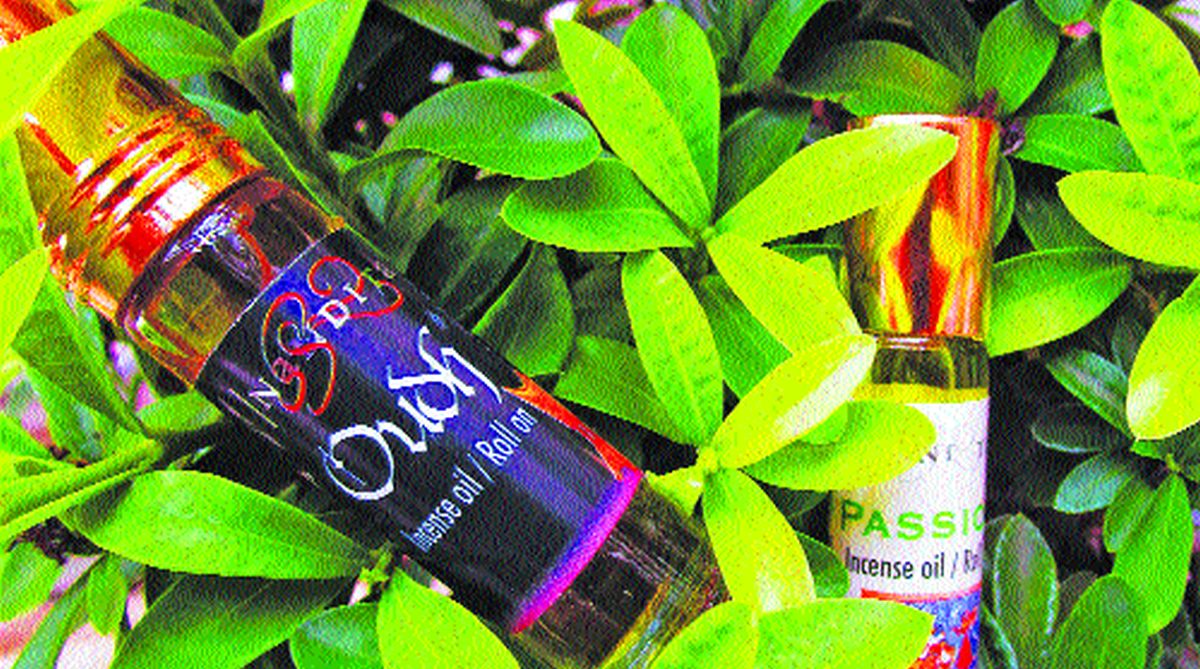Of rain and roses
“Every season has its own distinct scent,” says Krishnaraj Iyengar, our contributor, who is a connoisseur of perfumes and a perfumer himself

Shooting a shirtless photo in the snow is a daredevil’s dream. But there I was, in the pristine white expanse of a snowy Mt. Buller in southern Australia testing my endurance. It wasn’t just the ‘warm-blooded’ Indian bringing the legendary tropical heat in his veins, but his ancient heritage of seasonal scents silently protecting him from frosty ordeal. And the secret to my resilience was ‘Attar Hina’, an ancient traditional Indian winter perfume oil. The attar’s incredibly warming, herbaceous, spicy and comforting notes enveloped me with just a few dabs on the neck and pulse points of my wrists. The choppy chills of Mt. Buller’s ski slopes were insulated by its formidable sandalwood carpet. It was like being enwrapped in an invisible heirloom rug preserving generations of warmth!
The art of making perfume from natural fragrant materials was pioneered in India thousands of years ago, probably during the Indus Valley Civilisation. While many of these materials possess an inherently warming effect, many even cool you down during scorching summers. Their oil extracts derived by processes like distillation give you natural seasonal scents.
“The erstwhile indulgent Nawaabs were too feeble and dainty to cover themselves with a heavy ‘razaai’ (quilt) during winters. They would hence have lighter quilts stitched with ample amounts of Attar Hina smeared between the cotton layers, to provide them with the warmth of a heavier quilt!” narrates renowned traditional perfumer Navin Gundhi.
Advertisement
Being a seventh generation torchbearer of old Delhi’s legendary Gulabsingh Johrimal house of fragrance established in 1816, Gundhi is an upholder of one of the country’s oldest surviving traditional perfumeries. “We use over a hundred indigenous spices with pure sandalwood to make the historic Attar Hina come alive” he adds.
While the cooling ‘Ruh Khus’ or pure vetiver extract and ‘Kewda’ or pandanus ( a flower indigenous only to India) are known to be traditional summer scents, ‘Attar Gil’ or ‘Mitti Attar’ is a unique cooling attar bearing the scent of moist earth after the first showers of the Indian monsoon. “We distill fresh but broken earthen pottery to get the desired effect. Sandalwood also plays a vital role in Attar Gil” Gundhi explains.
The towering tabla monarch Ustad Ahmedjan Thirakwa (1881-1976)it is said, would wear Ruh Khus gifted to him by the Rampur Nawaab. During summer concerts, listeners would be enveloped by the ethereal silage of the ‘ruh’ (Arabic for ‘soul’) which is pure extract minus sandalwood or other elements. “The trend is returning. We do find people of all ages and walks of life demanding pure seasonal scents. Even our other blends like the deep, spicy ‘Aphrodesia’ with clove, cinnamon and rose for winter, a retro ‘natural cologne’ with patchouli, jasmine and bergamot for summers and our numerous aquatic blends for monsoons are catching-up”, smiles Navin Gundhi.
Incenses have been an integral nuance of Indian fragrance heritage. Guru Acharya of Nandita Fragrances, incense maverick of the ancient south Indian tradition offers an eclectic bouquet of agarbattis,attars and even Arabic-style ‘Bakhoor’ incense for each season. Acharya says, ‘oud’ or ‘agar’ is one of the world’s most expensive, exotic, sensual, and sought after oils. The heady, leathery, woody, earthy scent has a deeply rich, warming effect and is excellent for winters”. While his rugged Arabesque ‘Bakhoor Marhaba’ with Indian agarwood chips perfumed with musk, amber and saffron seems ideal for a nip in the air, Acharya’s light, yet captivating ‘oud’ attar provides the much needed warmth for cooler temperatures.
A blend of ‘oud’, clove, musk, vetiver and amber, the straightforward spicy woody blend it takes you back to chilly desert soirees in the Bedouin heartland of the Middle East. An effervescent ‘Nandita Passion’ attar with fresh floral, citrus notes is a popular summer favourite among young professionals and students alike.
Acharya’s ‘Bakhoor Al Barakah’ ( incense of bounties) is an unusual ‘oud’ and rose offering ideal for summer afternoons with fresh cooling notes of rose, a subtle sandalwood backbone and gilt-edge oud.
Kannauj in Uttar Pradesh is the fragrance capital of India where the time tested process of distillation makes magic out of India’s rich treasure house of fragrant gifts. To celebrate the glory of the Indian monsoons, I let my nose lead me to the renowned house of M.L.Ramnarain, distillers and perfumers who passionately uphold the art of pure, natural Indian fragrances.
A sharp, fresh, bright red ‘Ruh Motia’ derived by hydro distillation of the north Indian Jasmine Sambac ( ‘Bela’) was my first choice. Instant meditation was my first experience of what is called ‘God’s own perfume’ by ardent connoisseurs.
Jasmine Sambac is harvested during the monsoons with its crisp, bright, refreshing aromas ideal for the season.
A deep, warm, evocative ‘Shamama’ , a robust concoction of herbs, spices, rhizomes, essential oils and flowers is an apt energy booster on a dull grey day. ‘Kashmir 192121’, a co-distillate of rose on Kashmiri saffron with a sandalwood backdrop is pure olfactory seduction. Named after the zip code of Pampore in Kashmir ( 192121), home to the best Indian saffron, the tango of two notes evokes pure exhilaration.
A sensual saffron drapes a bright, delicate rose that takes you into the depths of its mysteries. The marriage of the two reminded me of Syrian songstress Mayadah Al Hannawi’s romantic classic ‘Ana Baashak’, the scent and the song painting a picture of a Mediterranean sunset on the screen of the mind.
‘Jannat e Ward’ (Heaven of roses), another co-distillate classic is a symphony of rose and Shamama as a base with cypriol, herbs, spices, saffron and oud. The distinct aroma resounds of Indian tradition reflecting the perfumery’s fiery patriotism and generations of toil in preserving the country’s fragrant heritage. The teasing play of varied notes presents an enigmatic canvas like that of the monsoon Raga Nat Malhaar with colour and cheer raining from a grey and white skyscape.
Advertisement